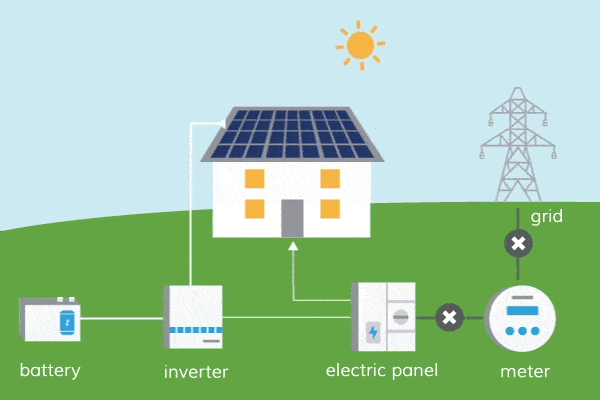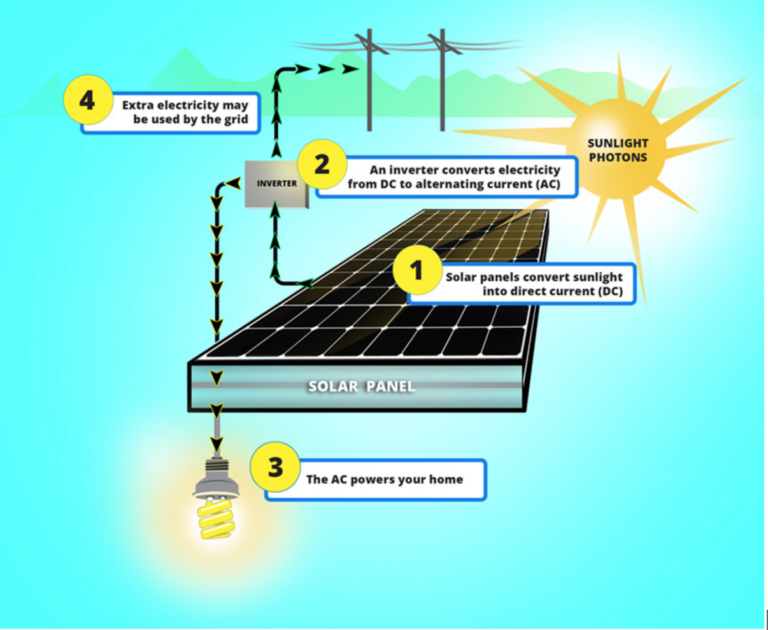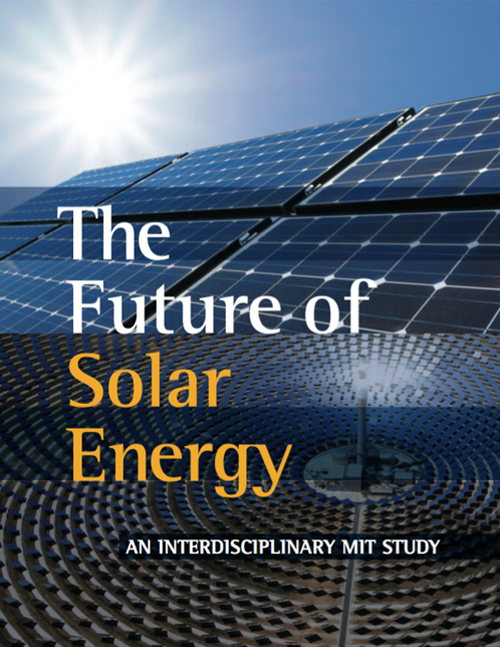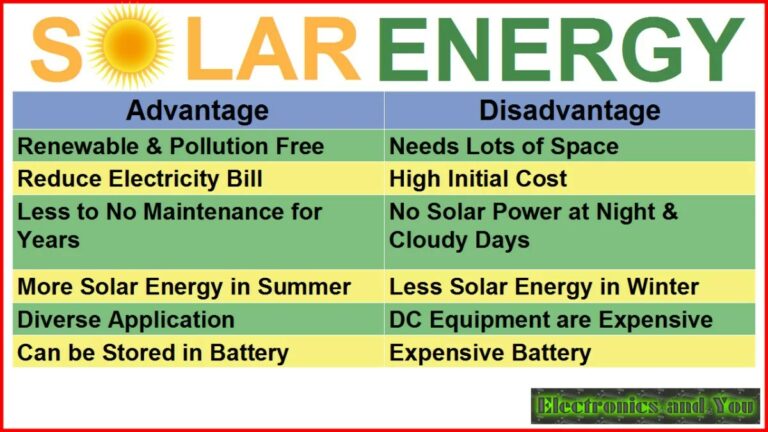How Do Floating Solar Arrays Produce Energy?
Have you ever wondered how floating solar arrays produce energy? Well, you’re in the right place! In this article, we’ll explore the fascinating world of floating solar arrays and learn how they harness the power of the sun to generate electricity. So, let’s dive in and discover the secrets behind this innovative technology!
Floating solar arrays, also known as floating photovoltaic systems or floatovoltaics, are solar panels that are designed to float on bodies of water, such as lakes, reservoirs, or ponds. It’s like having a mini solar power station right on the water! But how exactly do these mesmerizing solar arrays produce energy? Let’s find out!
The magic behind floating solar arrays lies in their ability to convert sunlight into electricity using photovoltaic (PV) cells. These cells, which are made from materials such as silicon, have the remarkable capability to absorb sunlight and convert it directly into electrical energy. So, when sunlight hits the solar panels floating on the water’s surface, the PV cells get to work and start generating electricity. It’s like turning sunlight into power right before our eyes! Incredible, isn’t it?
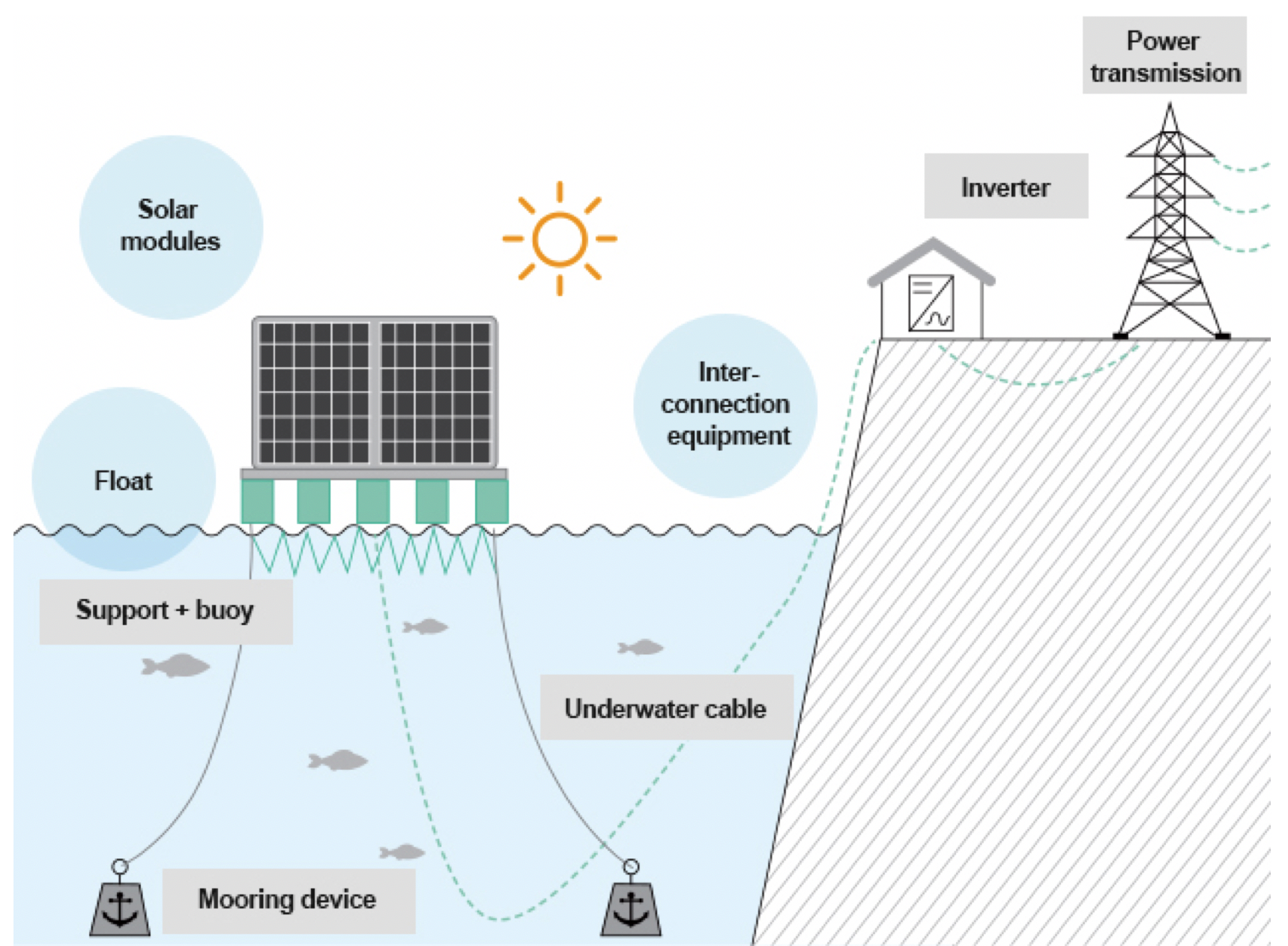
How Do Floating Solar Arrays Produce Energy?
Floating solar arrays, also known as floating solar farms or floating photovoltaic (PV) systems, are a rapidly growing technology that harnesses solar energy from bodies of water. These innovative systems offer a range of benefits, including increased land efficiency, reduced evaporation rates, and improved overall energy production. In this article, we will explore how floating solar arrays produce energy and delve into the technical and environmental aspects of this groundbreaking technology.
1. Design and Construction
Floating solar arrays consist of multiple photovoltaic panels mounted on floating platforms, typically made of high-density polyethylene (HDPE) or other durable materials. The platforms are designed to be lightweight, buoyant, and resistant to weather elements and corrosion. The panels themselves are similar to traditional solar panels and are made up of interconnected solar cells that convert sunlight into electricity through the photovoltaic effect. The electrical energy generated by the solar panels is then transmitted to an inverter, which converts it into usable alternating current (AC) electricity.
The construction of floating solar arrays involves careful planning and engineering to ensure structural integrity and stability. Factors such as water depth, wave action, wind speed, and the presence of aquatic life must be considered during the design phase. The platforms are often anchored to prevent drifting and equipped with anti-reflective coatings to minimize the loss of sunlight due to water surface reflections. Additionally, the electrical components and wiring systems are designed to be waterproof and resistant to corrosion, ensuring the longevity and efficiency of the floating solar array.
2. Positioning and Orientation
The positioning and orientation of floating solar arrays play a crucial role in maximizing energy production. To harness the maximum amount of sunlight, the arrays are strategically placed in areas with high solar irradiance and minimal shading from obstructions such as trees or buildings. The geographical location also determines the tilt angle and azimuth angle of the panels, aiming to capture the most sunlight throughout the day and throughout the seasons.
Floating solar arrays often have the advantage of being able to adjust their orientation to optimize energy generation. Some systems use tracking mechanisms that rotate the panels to follow the sun’s path, maximizing sunlight exposure. This dynamic positioning allows floating solar arrays to generate more electricity compared to fixed-ground-mounted solar installations. The ability to adapt to changing sun angles throughout the day makes floating solar arrays a flexible and efficient choice for harnessing solar energy.
3. Floating Platform Benefits
One of the key advantages of floating solar arrays is their ability to utilize bodies of water, such as reservoirs, dams, and ponds, that are often underutilized for other purposes. By installing solar panels on these water surfaces, land resources can be conserved, and the efficiency of solar energy production can be increased. Furthermore, the presence of water aids in cooling the solar panels, which enhances their performance and efficiency.
The floating platforms of these solar arrays offer additional benefits beyond energy production. They can help reduce water evaporation rates, leading to water conservation, particularly in arid regions. The shade provided by the floating solar panels can also help inhibit the growth of algae and reduce water evaporation, improving water quality and minimizing maintenance requirements. Additionally, floating solar arrays can act as floating habitats for aquatic species, promoting biodiversity and ecological balance.
4. Environmental Considerations
Floating solar arrays offer several environmental advantages compared to land-based solar farms. By utilizing water surfaces, they mitigate the need for land disturbance, preserving natural habitats and ecosystems. This aspect is particularly important in areas where land is limited or in high demand for other uses. Additionally, the shading effect of the panels on the water surface reduces the growth of algae, limiting harmful algal blooms and improving water quality.
Furthermore, floating solar arrays contribute to reducing greenhouse gas emissions and mitigating climate change. By harnessing solar energy, they provide a clean and renewable energy source, reducing reliance on fossil fuels. The environmental benefits of floating solar arrays, coupled with their high energy production potential, make them a sustainable and eco-friendly option for meeting the growing global energy demand.
5. Safety and Maintenance
Floating solar arrays undergo rigorous safety assessments and inspections to ensure their structural and electrical integrity. The anchoring systems, platforms, and electrical components are designed to withstand various weather conditions, including high winds and waves. Additionally, floating solar arrays are equipped with monitoring systems that collect data on energy production and operational performance, allowing for proactive maintenance and prompt detection of any issues.
Maintenance requirements for floating solar arrays are generally minimal. The floating platforms are designed to be self-cleaning, with rainwater naturally washing away dirt and debris. Periodic inspections may be carried out to ensure the stability of the platforms and the efficiency of the electrical components. As the technology continues to evolve, advancements in automated cleaning systems and predictive maintenance techniques are further reducing maintenance needs and prolonging the lifespan of floating solar arrays.
6. Advancing Floating Solar Technology
The rapid advancement of floating solar technology is driving innovation and expanding its potential applications. Researchers and engineers are continually improving the design and efficiency of floating platforms, exploring new materials that are even more durable and eco-friendly. Additionally, advancements in energy storage systems and grid integration are further enhancing the capabilities of floating solar arrays, allowing for a more reliable and stable energy supply.
As the world seeks sustainable energy solutions, floating solar arrays are emerging as a promising option in the renewable energy landscape. Their ability to efficiently utilize water surfaces, coupled with environmental benefits and advancements in technology, make them an attractive choice for governments, businesses, and communities striving to reduce carbon emissions and transition to cleaner energy sources.
Benefits of Floating Solar Arrays
Improved Land Efficiency
Floating solar arrays offer a unique advantage in terms of land efficiency. By utilizing water surfaces such as reservoirs, dams, and ponds, these systems can generate electricity without occupying valuable land resources. This is particularly beneficial in densely populated areas or regions with limited available land for solar installations. By maximizing land efficiency, floating solar arrays open up new opportunities for renewable energy deployment, even in areas where traditional ground-mounted solar farms would be impractical.
Floating solar arrays also prevent land degradation and preserve natural habitats, contributing to the conservation of biodiversity. By minimizing land disturbance, they help maintain the ecological balance and promote sustainable development.
Reduced Evaporation Rates
The presence of floating solar panels on water surfaces helps reduce evaporation rates, making them beneficial for regions facing water scarcity or drought conditions. The shade provided by the panels helps minimize direct exposure to sunlight, reducing the evaporation of water from the surface. This not only conserves water resources but also improves water quality by reducing the concentration of dissolved minerals and pollutants.
In areas where water evaporation is a significant concern, the installation of floating solar arrays can support water management efforts, providing a sustainable solution for conserving water resources.
Enhanced Energy Production
Floating solar arrays are known to generate more electricity compared to their ground-mounted counterparts. The ability to adjust the orientation of the panels to track the sun’s path allows for optimal solar energy collection throughout the day. This dynamic positioning maximizes energy production and improves the overall efficiency of the system.
The cooling effect of the water also plays a role in enhancing energy production. The lower operating temperatures of the solar panels increase their efficiency, resulting in a higher output of electricity. This aspect is particularly relevant in regions with high ambient temperatures, where traditional solar panels may experience performance degradation due to overheating.
Furthermore, the reflection of sunlight off the water surface can increase the overall solar irradiance received by the panels, further contributing to higher energy yields.
Integration of Floating Solar with Other Technologies
Floating Solar and Energy Storage Systems
The integration of floating solar arrays with energy storage systems allows for the efficient utilization of solar energy even when sunlight is not available or during peak demand periods. Energy storage systems, such as lithium-ion batteries, can store excess electricity generated by the floating solar arrays during the day. This stored energy can then be utilized during nighttime or cloudy periods, ensuring a continuous and reliable power supply.
The combination of floating solar arrays with energy storage systems provides a sustainable solution for addressing intermittency issues associated with solar energy. It enhances grid stability, reduces reliance on fossil fuel-based power sources, and promotes a greater share of renewable energy in the overall energy mix.
Floating Solar and Aquaculture
Another area of innovation is the integration of floating solar arrays with aquaculture systems. This dual-use approach allows for the simultaneous production of renewable energy and the cultivation of aquatic species. The shade provided by the floating solar panels creates a favorable environment for fish, algae, and other aquatic organisms. Moreover, the presence of the solar arrays can help reduce water temperature fluctuations, which can be beneficial for certain fish species.
By combining floating solar arrays with aquaculture, the overall land-water resource use efficiency can be maximized. This integrated approach contributes to sustainable food production, renewable energy generation, and the conservation of natural resources.
Floating Solar and Water Treatment
The combination of floating solar arrays with water treatment facilities offers several advantages. The shading effect provided by the solar panels reduces the growth of algae, minimizing the need for chemical treatments and improving water quality. Additionally, the presence of floating solar arrays can provide additional energy for the operation of water treatment systems, reducing reliance on grid electricity.
Water treatment plants are typically energy-intensive, and by integrating floating solar arrays, significant reductions in carbon emissions and operating costs can be achieved. This integration promotes sustainable water management practices and supports the transition to a greener and more resilient infrastructure.
In conclusion, floating solar arrays provide a promising solution for expanding solar energy generation while addressing land limitations and environmental considerations. Their ability to utilize water surfaces efficiently, reduce evaporation rates, and enhance energy production makes them an attractive option for meeting the growing global demand for renewable energy. By integrating floating solar with other technologies such as energy storage, aquaculture, and water treatment, the potential benefits can be further optimized. As the world continues its quest for sustainable energy solutions, floating solar arrays are poised to play a significant role in shaping a cleaner and more sustainable future.
Key Takeaways: How Do Floating Solar Arrays Produce Energy?
- Floating solar arrays are special installations that allow solar panels to be placed on water bodies.
- These solar panels generate electricity by converting sunlight into electrical energy.
- The water beneath the solar panels helps keep them cool, improving their efficiency.
- Floating solar arrays can be implemented in lakes, reservoirs, and even oceans.
- They make efficient use of unused water surfaces, reducing land requirements for solar installations.
Frequently Asked Questions
Welcome to our FAQ section on how floating solar arrays produce energy! Below, we have provided answers to some commonly asked questions to help you understand the process of generating electricity from floating solar panels.
1. How do floating solar arrays work?
Floating solar arrays, also known as floating photovoltaic (FPV) systems, work similarly to traditional solar panels. They consist of photovoltaic (PV) panels that convert sunlight into electricity. The key difference is that they are mounted on floating structures placed on bodies of water, such as lakes, reservoirs, or ponds.
The floating platforms on which the solar panels are mounted are made of buoyant materials. They are designed to withstand the elements and remain stable on the water’s surface. These platforms house the PV panels and electrical components necessary for the solar power generation process.
2. Why are solar panels placed on water?
Placing solar panels on water offers several benefits. Firstly, it helps to overcome some of the land constraints typically associated with traditional solar farms. By utilizing water bodies, floating solar arrays can be installed in areas where land space is limited or expensive.
Secondly, water has a cooling effect on the solar panels, which can improve their efficiency and energy output. The water’s natural temperature regulation helps prevent the PV panels from overheating, thus maximizing their performance. Additionally, water bodies often have minimal shade, allowing the solar panels to receive more hours of direct sunlight.
3. How are floating solar panels anchored?
Floating solar panels are anchored using various methods to ensure stability and prevent drifting. One common anchoring system is a mooring system. This system uses mooring lines, typically made of ropes or chains, which connect the floating platforms to anchoring points on the shore or lakebed.
Other anchoring systems include using concrete blocks, steel structures, or even bottom-weighted floats. The choice of anchoring method depends on factors such as water depth, wave conditions, and the specific requirements of the floating solar array installation.
4. Are floating solar arrays environmentally friendly?
Yes, floating solar arrays are considered environmentally friendly. They have several advantages over land-based solar installations. Firstly, by utilizing water bodies, they can help to conserve land resources and reduce land use conflicts.
In addition, floating solar arrays have the potential to create synergy with water-based ecosystems. The platforms can provide shelter for fish, reduce evaporation rates of water bodies, and mitigate algae growth. Furthermore, the panels can help to reduce water evaporation, which can be significant in areas facing water scarcity.
5. How much energy can floating solar arrays produce?
The energy production of floating solar arrays depends on various factors, such as the size and capacity of the array, the quality and efficiency of the PV panels, and the amount of sunlight received. However, floating solar arrays have shown promising results in terms of energy generation.
Studies have indicated that floating solar arrays can generate electricity at a higher efficiency compared to land-based solar installations. The cooling effect of the water, coupled with the potential for increased sun exposure and reflection from the water surface, can contribute to improved energy production. Additionally, floating solar arrays have the advantage of reducing water evaporation, which can indirectly save energy related to water usage.
Summary
Floating solar arrays are a cool way to produce energy from the sun. The solar panels are placed on platforms that float on water, like a big, sunny raft. These floating solar arrays work just like regular solar panels, absorbing sunlight and converting it into electricity. They can be used on different bodies of water, like lakes, reservoirs, or even the ocean. By using this technology, we can harness the power of the sun and generate clean, renewable energy. It’s a win-win for the environment and for our energy needs.

